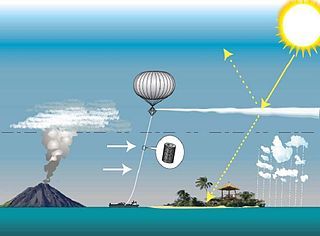A Question on Geoengineering
Howard writes:
Have you heard of a technology where they simulate a volcano eruption by injecting sulfur dioxide into the sky, in a sense cooling the planet. I heard about this in the New Yorker magazine, and in a book called “Super Freakonimics.”
Hello, Howard.
Yes, there are dozens of international conferences on the subject (“geoengineering”) annually, which I do not attend, though I do try to keep some level of understanding as to what they’re about. There is no doubt that humankind could, if it chose, use the technology currently available against the specter of global warming. Though this may make sense in the future if more obvious and conventional solutions (like environmentalism) don’t work, I’m not a proponent at this point, as the likelihood of screwing up and causing unintended consequence so greatly outweighs the potential benefit.
Think of the numerous unanswerable questions that hang in the balance, like, “Who’s going to be in charge of all this?” You’re going to put a group of people in charge of the Earth’s thermostat? Who should these people be?
You’re talking to someone who normally wants to move the decision-making process right along when it comes to climate change mitigation. Here, for once, I’m glad to see the world is dragging its heels.


I’m 100% with Craig on that one. There may come a time when climate change looks like becoming so catastrophic that the possible benefit of large scale geo-engineering outweighs the risk, but I do not think we are there yet.
Some of the experiments could perhaps be “done in reverse” by for example monitoring the effects of removing large sources of Sulphur (add filtering to dirty coal fired power stations) or by going back through the detailed climate records of Europe and North America where legislation cleaned up acid emissions from power stations.
There are very serious potential side effects of adding sulphur to the atmosphere, or other geo-engineering solutions such as the risk of large increases in Asthma, acid rain damaging crops and forests, ocean acidification, and possible changes to rainfall patterns. We cannot afford for example to have the Indian monsoon fail because of geo-engineering attempts to modify rising temperatures.
Small local interventions such as urban tree planting, measures to increase recharge of aquifers and ordinances to require heat reflective roofing materials are a different matter as are small scale experiments with localized short term effects.
“Geoengineering” costs more than carbon mitigation.
The problem with the “Pinatubo Option” is that it would require the dispersion of more than 10 million tons (not an exaggeration) of extremely fine-ground SO2 into the upper stratosphere in order to shade ~2 W/m of solar forcing (current forcing from increased GHG’s and associated feedback mechanisms is likely somewhere around that power level).
To disperse 10 million tons of SO2 would likely take ~1 million flights from 747-sized aircraft – an extremely expensive proposisition (assume ~$100,000/flight for a total of about $100 billion).
The particles still fall. While nano-particles would indeed stay aloft for a while, there’s the estimation that roughly half of the particles would rain out every year, requiring another $50 billion/year in spreading another 5 million tons of SO2 into the stratosphere. The acid rain wouldn’t really be that big of a factor – as we’re talking about less than half of the SO2 distributed world-wide as the U.S. coal power plants produce every year… but a dead cost of 100 billion up-front and 50 billion/year is pretty steep (note during all this time underlying GHG emissions are still increasing – far faster, so progressively more SO2 would be required; also there’s now an additional consumption of several tens of billions of gallons of jet-fuel/year, which dramatically increases depletion and increases the cost of the Pinatubo Option yearly). If we spent 50 billion/year on wind farms and WindFuels plants we would offset an additional cumulative ~40 million tons CO2/year – a far better bargain.
All geoengineering concepts fail when considered in scope. The cost doesn’t justify the action – it’s better to just work on efficiency and carbon mitigation; and accept the accommodation costs for future warming.